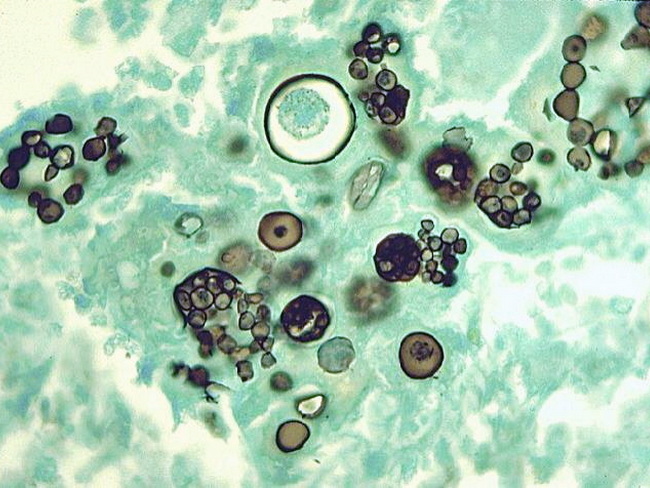Coccidioidomycosis : Diagnosis


Comments:
Diagnosis of Coccidioidomycosis: The diagnosis relies on careful patient history (including travel history), symptoms, lab. tests (CBC, ESR, eosinophilic count), and chest X-ray. However, all of these lack specificity. Fungal cultures and tissue biopsy are labor-intensive, invasive and expensive but can provide definitive diagnosis. GMS stain (shown here) on tissue sections highlights spherules, endospores and hyphae (when present). Coccidioidin skin test for detecting cell-mediated delayed-type hypersensitivity to C. immitis antigen had fallen out of favor but is now being looked at again.Serologic tests such as enzyme immunoassay (for IgM and IgG antibodies) and immunodiffusion (IgM antibodies) are the mainstay of diagnosis. IgM antibodies detected in 75% of patients within 2-3 weeks post-infection. IgG antibodies appear within several months after infection. Real-time PCR has been used lately with high sensitivity and specificity in bronchial wash fluid specimens as well as on paraffin-embedded biopsy material.Image source: Dr. Edwin P. Ewing, Jr./CDC; original image is here; use of this image does not constitute its endorsement or recommendation by the U.S. Government, Department of Health and Human Services, or Centers for Disease Control and Prevention.



